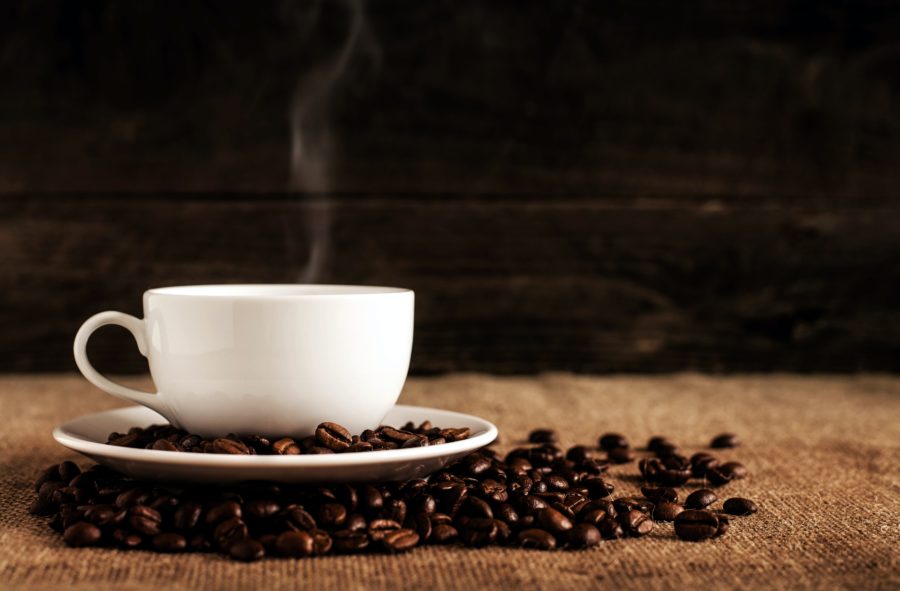The COVID-19 pandemic has turned the world upside down, but that hasn’t stopped the global consumption of roughly 2.25 billion cups of coffee per day.
What has certainly changed during this 2020 crisis is how Americans get their cup of Joe.
Before the pandemic hit, millions of Americans would stop in at their local Starbucks or Dunkin’ to get their fill, but now the vast majority are working from home. This hasn’t changed consumer’s desire for coffee, just the way they access their coveted drink.
A survey commissioned by the National Coffee Association (NCA) reported that Americans were drinking just as much coffee during the pandemic, but much more at home instead of in coffee shops, cafes, and restaurants due to the current environment. Recent reports say retail coffee sales are up about 10% so far this year compared with a 2% sales increase in many recent years, according to data provided by coffee companies.
When the pandemic began to really hit the U.S. in mid-March, shortages played a big part in what the consumer could and would purchase, which led to many coffee drinkers investing in espresso and other coffee machines, or updating their current coffee makers.
In fact, in the 13 weeks ending June 27, it was reported that 1 million more coffee and espresso makers were sold than the same period in 2019, according to the NPD Group. Sales of all coffee makers are also reportedly up 28% since the start of the pandemic.
K-Cup king Keurig Dr Pepper recently reported that shipments of its Keurig machines to retailers jumped 34% in the third quarter and they expect to add approximately three million new households in 2020, compared to the two million household average they’ve experienced over the last several years.
“Consumers are trying to replicate what they were getting in a cafe at home,” said Marty Thompson, president of Nestlé Coffee Partners, a division of Nestlé SA, which makes Nescafe coffee as well as Starbucks-branded packaged coffee. Thompson said the packaged-coffee industry got about three years’ worth of new consumers in seven months during the pandemic.
Next year, Nestlé plans to introduce some coffee products with a lower price tag and some sold in bulk at a lower cost per cup.
Additionally, two of the biggest beneficiaries of the crisis have been Folgers and Maxwell House.
Statista, a global market and consumer data company, reported in July that Folgers (owned by J.M. Smucker) was the leading brand of regular ground coffee in the U.S. in 2020 by a wide margin. The brand produced sales more than one billion U.S. dollars, double that of its next closest rival, Starbucks. The brand seems to be America’s overall favorite, as it also leads the decaffeinated ground coffee category with $81 million in sales.
Experts say the pandemic has turned things around for Smucker. In its most recent quarter, the company’s U.S. coffee retail sales rose 23% to $571 million, including double-digit growth for Folgers.
Maxwell House’s owner Kraft Heinz doesn’t disclose sales of its coffee but did report in September that it aims to stabilize the business as part of its broader turnaround efforts.
So, what has this COVID-induced environment meant for the likes of Starbucks and Dunkin’ Brands over the last several months?
Starbucks recently reported fourth quarter same-store sales (SSS) decline of 9% in the U.S. and drop of 3% in China. Global SSS declined 14%, driven by a 22% decrease in comparable transactions, partially offset by a 10% increase in average ticket.
The company reported that it did benefit from higher sales of the Starbucks-branded packaged coffee that Nestlé makes, and that sales of packaged coffee grew faster this year than any time since Keurig machines for home use came onto the market more than a decade ago.
“I am very pleased with our strong finish to fiscal 2020, underpinned by a faster-than-expected recovery in our two lead growth markets, the U.S. and China,” said Kevin Johnson, President and CEO.
Johnson believes that its industry-leading digital platform and the company’s ability to innovate rapidly will continue to fuel its recovery and provide confidence in a robust operating outlook for fiscal 2021.
Dunkin’ Brands posted third-quarter earnings late last month achieving positive SSS, with U.S. SSS posting a slight gain of 0.9%, while FactSet consensus was looking for a decline of 3.8%. SSS rose as average ticket increased and offset a drop in traffic caused by the pandemic.
“In response to changing consumer patterns, we moved quickly to adapt our menu, introducing new beverages and snacking items designed to appeal to both morning and afternoon traffic, as well as younger consumers,” said Dunkin’ CEO Dave Hoffmann. “We also doubled down on digital, leveraging the strength of our assets to give customers an even faster, frictionless experience.”
Dunkin’ reported that it returned to growth at open stores, but said it was closing hundreds of others due to the pandemic. Dunkin’ is trying to sell more blended drinks such as lattes, which are more complicated to make. The company was already installing espresso machines at its stores before the pandemic. “These are products that can’t be easily made and replicated at home,” said Hoffmann.
So, is there a catalyst that might get consumers back into the swing of things over the next several months?
Significant news recently came from Pfizer and its partner BioNTech SE who said they have a vaccine that proved to be more than 90% effective to combat COVID-19. Other players such as Modena also claim they are also close to finding viable options for the virus.
This could be the eventual game changer that would steer consumers back in the direction of their local Starbucks or Dunkin’ on their way to work.
However, it could be a tough uphill battle over the next several months with news of daily COVID-19 outbreaks throughout the U.S. Thus, the stay-at-home coffee drinking trend will likely take precedence for the foreseeable future.













